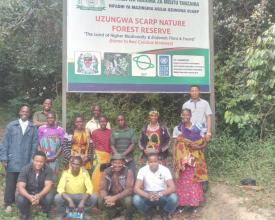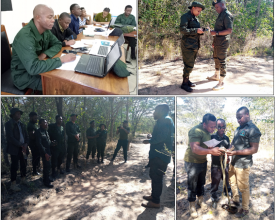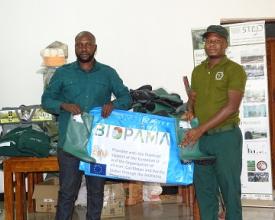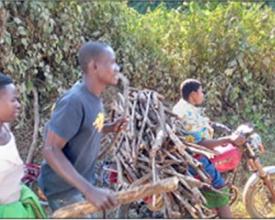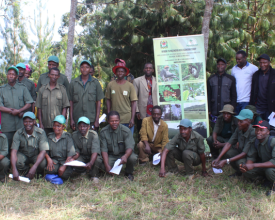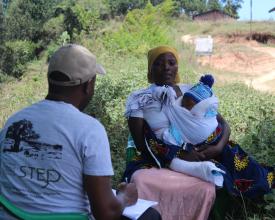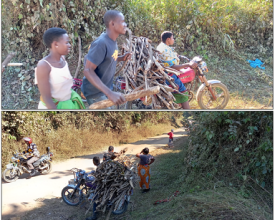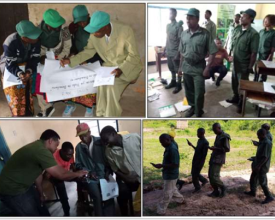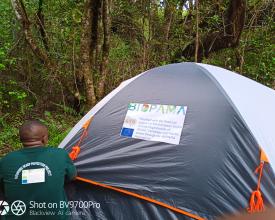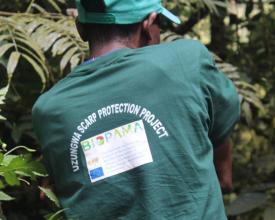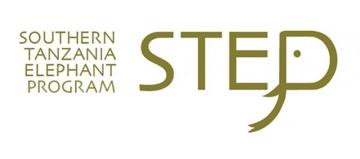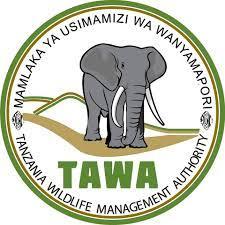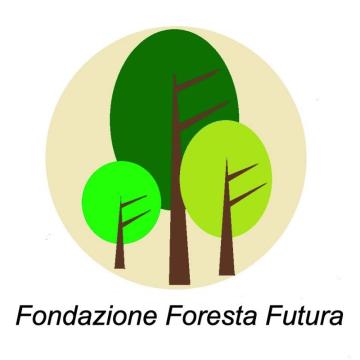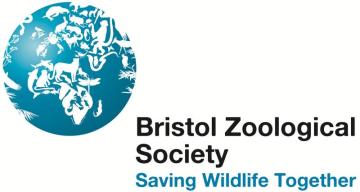Mejora de la gestión y protección eficaces de la Reserva Forestal Natural de Uzungwa Scarp, un punto caliente de biodiversidad tropical amenazado en Tanzania
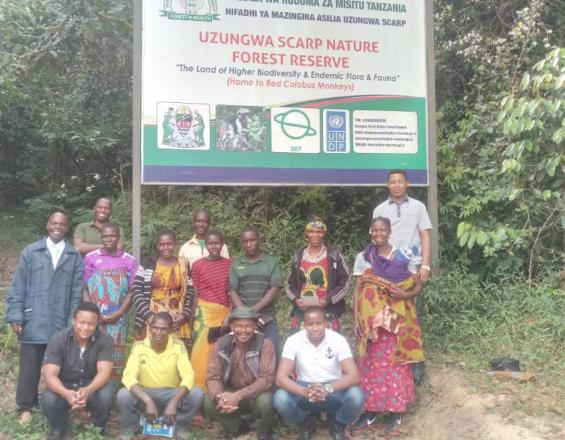
Desde 2017, el Programa del Elefante del Sur de Tanzania (STEP) y la Agencia de Servicios Forestales de Tanzania (TFS) han colaborado para mejorar los programas de protección en la Reserva Forestal Natural de Uzungwa Scarp (USNFR). La USNFR es un punto caliente de biodiversidad (alta densidad de especies endémicas y en peligro de extinción según la UICN) en las montañas Udzungwa de Tanzania, que abarca 32.000 hectáreas, rodeadas por 19 aldeas adyacentes en tres distritos de las regiones de Iringa y Morogoro. La pandemia de COVID-19 limitó los esfuerzos de protección en la USNFR en 2019-2020, lo que provocó la pérdida de financiación nacional e internacional. Esto provocó una disminución abrupta de las actividades de protección durante un periodo crítico para la reserva. Para restablecer la situación, se estableció esta solución dirigida a prevenir la extinción local de especies amenazadas y mejorar los beneficios sociales. Consistía en aumentar la participación de la comunidad, reforzar la capacidad de los equipos de patrulla y utilizar los datos para la toma de decisiones. Esta solución se tradujo en un aumento significativo de la protección de la USNFR.
Contexto
Défis à relever
La pandemia de COVID-19 provocó una emergencia al reducir la financiación de las agencias y limitar los esfuerzos de protección en la USNFR desde 2019. Esto provocó una disminución abrupta de las actividades de protección durante un periodo crítico y un déficit de financiación desde septiembre de 2020, lo que agravó la presión sobre la reserva. Las aldeas adyacentes al bosque sufrían de ingresos insuficientes, una mayor dependencia de los recursos forestales y actividades mineras. Por lo tanto, la continuación de las actividades de protección era crucial para evitar el declive de la fauna amenazada y aumentar la posibilidad de una solución autosostenible.
Ubicación
Procesar
Resumen del proceso
El primer bloque permitió la participación de las comunidades locales, lo que es crucial para establecer asociaciones y generar confianza en la gestión de la USNFR. En este bloque se identificaron las deficiencias que debían subsanarse a partir de los resultados de las reuniones con los VNRC y a través del ACB, lo que sentó las bases para nuevas actuaciones. El segundo bloque de construcción y abordó las lagunas identificadas proporcionando formación, equipamiento y tutoría a través de operaciones de patrulla conjuntas con las comunidades locales. Esto aumentó la eficacia de la gestión de los recursos naturales y redujo la presión sobre el bosque. El último componente fomentó la adopción de tecnologías de conservación y el uso de datos para la toma de decisiones informadas. Esto facilitó la asignación adecuada de recursos y la intervención en actividades ilegales. En conjunto, los tres componentes básicos aumentaron las actividades conjuntas de protección y contribuyeron a la sostenibilidad.
Bloques de construcción
Mayor participación comunitaria
El objetivo del compromiso comunitario era aumentar la colaboración y la participación de la comunidad en la gestión del USNFR. Ello permitió alcanzar los objetivos de conservación y aumentar los beneficios para las comunidades locales:
- Reuniones con los comités de recursos naturales de las aldeas (VNRC), que permitieron explorar los medios de colaboración y la forma de intervenir en los problemas a los que se enfrentan.
- La realización de una evaluación de los beneficios para las comunidades locales, que reveló que la mayoría de los encuestados estaban de acuerdo en que el uso de la reserva forestal les reportaba beneficios.
- Los resultados del ACB condujeron a la solución de facilitar el acceso a productos forestales no madereros y servicios sociales proporcionados por la USNFR a través de permisos especiales supervisados por los VNRC.
Factores facilitadores
- Las estructuras existentes en los pueblos, como un buen liderazgo y los CNRV, ayudan a generar confianza y buenas relaciones con las comunidades locales para fomentar su participación y apoyo.
- La voluntad de los actores (líderes de los pueblos, comunidades locales, gobierno local y TFS) de apoyar la solución.
- Participación continua de las comunidades locales adyacentes
Lección aprendida
- Las reuniones con las comunidades locales (los VNRC) fueron esenciales para generar confianza y medios de comunicación y establecer asociaciones entre ellas y la gestión de la USNFR.
- La realización de un ACB proporcionó información valiosa sobre las percepciones locales de la Gestión Forestal Conjunta (GFC) y las necesidades en cuanto a los beneficios obtenidos del USNFR.
- La colaboración con las comunidades locales adyacentes mejoró los resultados del proyecto y aumentó los medios de sostenibilidad
- El acceso a los productos forestales no madereros (PFNM) y a los servicios sociales fue un incentivo importante para que las comunidades locales apoyaran los esfuerzos de conservación.
Capacitación de los equipos de patrulla
La solución formó a 214 Village Game Scouts (VGS) de 19 pueblos adyacentes a la USNFR, entre ellos un 32% de mujeres, en derechos humanos, uso de dispositivos portátiles del Sistema de Posicionamiento Global (GPS) y gestión participativa de la Reserva Natural. Además, el proyecto proporcionó equipo de patrulla, como uniformes, botas de goma, tiendas de campaña, dispositivos portátiles GPS, etc., para facilitar la eficacia de las operaciones de las patrullas móviles de acampada. La solución también apoyó las operaciones conjuntas de patrullas a pie contra la caza furtiva (que asesoran a las comunidades locales), orientándolas para que lleven a cabo sus propias patrullas en las respectivas zonas adyacentes al bosque. Los equipos de patrulla estaban formados por personal de TSF (22,3%), VGS formados a partir de las comunidades locales (44,5%) y guardabosques de la unidad contra la caza furtiva (33,2%), con un 10,4% de mujeres de todos los participantes que indicaron un aumento de su participación. Estos esfuerzos aumentaron las actividades de protección, redujeron la presión del bosque y garantizaron el suministro sostenido de bienes y servicios que ofrecen los bosques. Como resultado, otros aldeanos se mostraron dispuestos a ofrecer información inteligente sobre incidentes de caza furtiva.
Factores facilitadores
Los factores favorables que son importantes para permitir el éxito de la "Capacitación de los equipos de patrulla" son:
- Operaciones conjuntas de patrulla a pie contra la caza furtiva que sirvan de mentores a las comunidades locales.
- Un equipo de patrulla diverso y representativo formado por personal de TSF, comunidades locales (VGS) formadas a partir de las comunidades locales y guardabosques de la unidad contra la caza furtiva.
- Consideración del género en el proceso
- Marcos y normativas nacionales existentes que permiten a las VGS participar en las actividades de protección de las Reservas Naturales
- Disposición de otros aldeanos a participar
Lección aprendida
Durante la aplicación de este componente básico aprendimos las siguientes lecciones clave:
- Las comunidades locales deben participar y formarse en la gestión de los recursos naturales para garantizar la sostenibilidad de los esfuerzos de conservación, ya que tienen la responsabilidad de proteger los recursos que tienen a su alcance.
- Proporcionar a las comunidades locales el equipo y las herramientas adecuadas aumentó su eficacia en la protección del medio ambiente.
- Las operaciones conjuntas de patrullas a pie contra la caza furtiva en las que participan las comunidades locales ayudaron a orientarlas y les permitieron realizar sus patrullas en sus respectivas aldeas adyacentes al bosque, reduciendo la presión sobre el bosque y mejorando la eficacia de la lucha contra la caza furtiva.
- Es crucial garantizar que los equipos de patrulla sean diversos y representativos, especialmente con la participación de mujeres, para mejorar el compromiso y la participación de la comunidad.
- Las campañas de concienciación deben ir acompañadas de actividades de capacitación para que las comunidades comprendan la importancia de los esfuerzos de conservación y su papel en el proceso.
Uso de datos para la toma de decisiones
El componente básico hacía hincapié en la importancia de utilizar datos para la toma de decisiones informadas en los esfuerzos de conservación. Para facilitarlo, la solución promovió la adopción de tecnologías de conservación como el Survey 123, las cámaras trampa y el software SIG. El uso de estas tecnologías permitió una recopilación de datos más eficiente y eficaz y mejoró la planificación de patrullas estratégicas, al tiempo que incorporaba datos de inteligencia de los miembros de la comunidad. La adopción del software SIG y del Sistema de Gestión de Áreas Protegidas (PAMS) mediante el recolector de datos móvil Survey 123 proporcionó herramientas para crear mapas, tablas y gráficos de puntos críticos, lo que facilitó la identificación de áreas prioritarias y la planificación de intervenciones específicas. El uso de datos dio lugar a esfuerzos de conservación específicos, lo que mejoró la estrategia general de conservación y puso de relieve el papel fundamental de los datos en los esfuerzos de conservación, y aumentó las actividades conjuntas de protección.
Factores facilitadores
Entre los factores que facilitan el uso de datos para la toma de decisiones se incluyen:
- La disposición de los actores en la adopción de tecnologías de conservación como el Survey 123, las cámaras trampa y el software SIG.
- La disposición de las comunidades locales adyacentes a compartir los datos de inteligencia que realmente mejoran las actividades de protección
- Mejora de la planificación de patrullas estratégicas (uso de información de inteligencia, mapas de puntos calientes, tablas y gráficos para identificar las zonas prioritarias y planificar intervenciones específicas).
- Compromiso de utilizar los datos para tomar decisiones con conocimiento de causa
Lección aprendida
Este elemento básico puso de relieve la importancia de utilizar datos para la toma de decisiones informadas en los esfuerzos de conservación. Algunas de las principales lecciones aprendidas son que el establecimiento de mecanismos de retroalimentación y la participación de la comunidad fueron claves para el éxito. Aunque la tecnología mejoró notablemente la recogida y el análisis de datos, también planteó algunos retos en cuanto al mantenimiento de los equipos y la gestión de los datos. Para superarlos fue esencial contar con los recursos y el apoyo técnico adecuados. En general, este enfoque dio lugar a una estrategia de conservación más eficaz, poniendo de relieve el papel fundamental de los datos y la participación de la comunidad en los esfuerzos de conservación.
Impactos
La solución aumentó la protección del USNFR reduciendo las actividades ilegales. Para ello se adoptaron medidas como la participación de las comunidades locales en reuniones y patrullas conjuntas (40% de miembros del Comité de Recursos Naturales de las Aldeas), la evaluación de los beneficios comunitarios y el aumento del acceso a los productos forestales no madereros (PFNM) en los bosques de las aldeas y las zonas de amortiguamiento. La solución también formó a 214 comunidades locales (32% mujeres) en Gestión Forestal Participativa y a 17 (14% mujeres) en el uso de Recolectores Móviles de Datos y Cámaras trampa para reforzar la capacidad de los equipos de patrulla. Los equipos se equiparon con equipos de patrulla, mantuvieron los vehículos de patrulla y llevaron a cabo 22 operaciones de patrulla conjunta en campamentos móviles con apoyo técnico. Además, STEP facilitó el uso de tecnologías de conservación como el Survey 123, cámaras trampa, y SIG y GPS para recopilar, almacenar y analizar datos y utilizarlos en la toma de decisiones.
Beneficiarios
La participación de 19 aldeas adyacentes aumentó la protección de la reserva, garantizó la salud de los bosques y facilitó el acceso a los PFNM y el suministro de agua. Los equipos conjuntos de patrulla de las instituciones locales se beneficiaron directamente de la formación, la experiencia y las diversas actividades de solución.
Objetivos de Desarrollo Sostenible
Historia
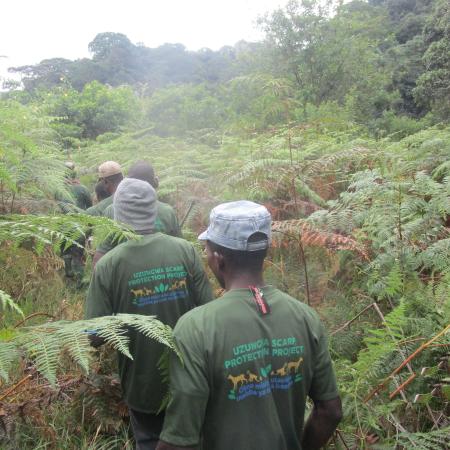
La Reserva Forestal Natural de Uzungwa Scarp (USNFR), en Tanzania, estuvo en su día amenazada por la tala ilegal, la caza furtiva y la invasión. La reserva albergaba muchas especies vegetales y animales. Entre ellas, el mono colobo rojo de Udzungwa, en peligro de extinción. También era una zona crucial de captación de agua. Suministraba agua al valle de Kilombero y al proyecto hidroeléctrico de Kihansi. Este último generaba entre el 15% y el 20% de la energía hidroeléctrica de Tanzania. Sin embargo, la reserva luchaba por protegerse y las comunidades locales no participaban plenamente en los esfuerzos de conservación.
Para solucionar este problema, la USNFR y la ONG STEP se unieron y aplicaron un enfoque de gestión forestal conjunta. Para ello se celebraron reuniones comunitarias en las que se habló de la importancia de la reserva y de las amenazas que se cernían sobre ella. Los colaboradores trabajaron con los miembros de la comunidad para elaborar un plan de acción y luego los formaron y equiparon para formar parte de los equipos de patrulla. Se enseñó a las comunidades adyacentes a identificar y denunciar las actividades ilegales y a colaborar con las autoridades para tomar medidas contra los implicados. La solución pretendía utilizar los datos para fundamentar su toma de decisiones y mejorar la eficacia de las patrullas.
Los resultados de esta solución fueron inspiradores. La participación de las comunidades locales adyacentes aumentó significativamente, lo que se tradujo en una reducción de las actividades ilegales. Las patrullas se hicieron más eficaces y los miembros de la comunidad se sintieron orgullosos de su participación en la protección de la reserva.
Destaca una historia de éxito. Durante una patrulla, atraparon a un sospechoso de tala de árboles. En lugar de castigarlo, el equipo de patrulla le impartió educación conservacionista y le advirtió de las consecuencias de sus actos. Después le llevaron a la oficina de su pueblo para que tomara medidas. Al cabo de tres meses, se convirtió en un defensor de la protección del USNFR. Se unió al Comité de Recursos Naturales de la aldea y se convirtió en parte integrante del equipo, trabajando incansablemente para proteger la reserva y a sus habitantes.
La mayor participación de las comunidades locales adyacentes en la protección de la USNFR es un verdadero ejemplo del poder del compromiso comunitario en los esfuerzos de conservación. No sólo se protegió la reserva, sino que también se proporcionaron oportunidades económicas a las comunidades, ya que participaron en actividades de ecoturismo en la reserva. Esta solución demuestra que cuando las comunidades se implican y adquieren autonomía, pueden convertirse en socios activos en los esfuerzos de conservación, lo que conduce a un futuro sostenible para todos.

